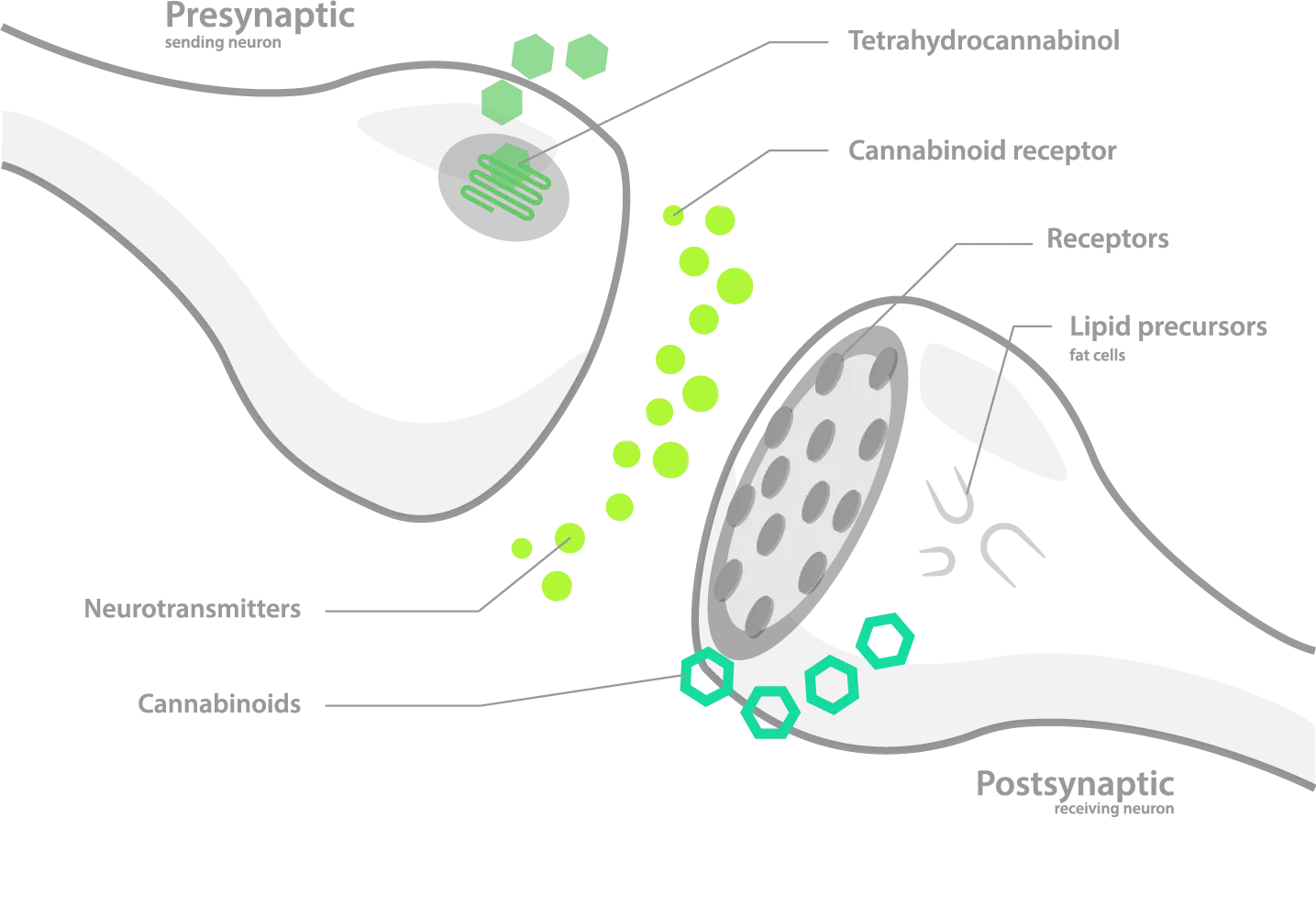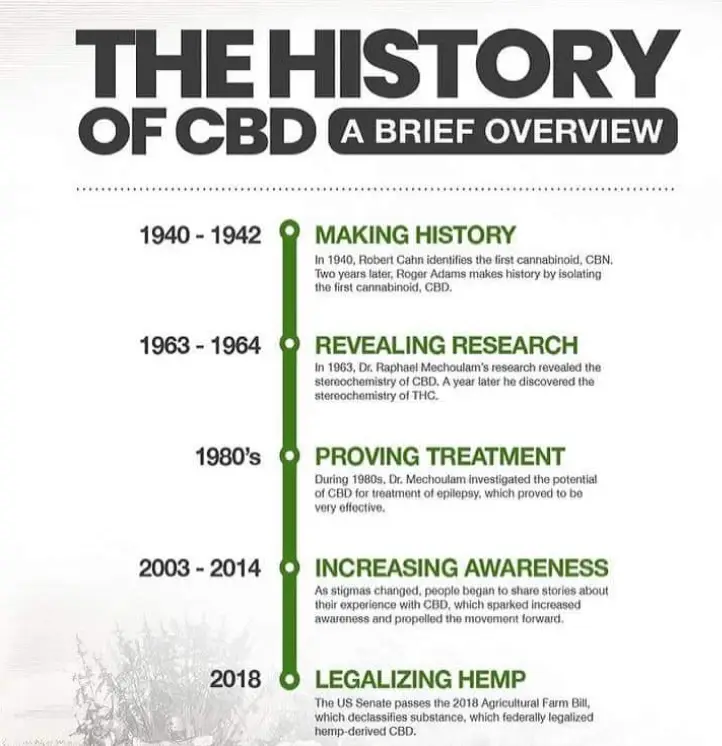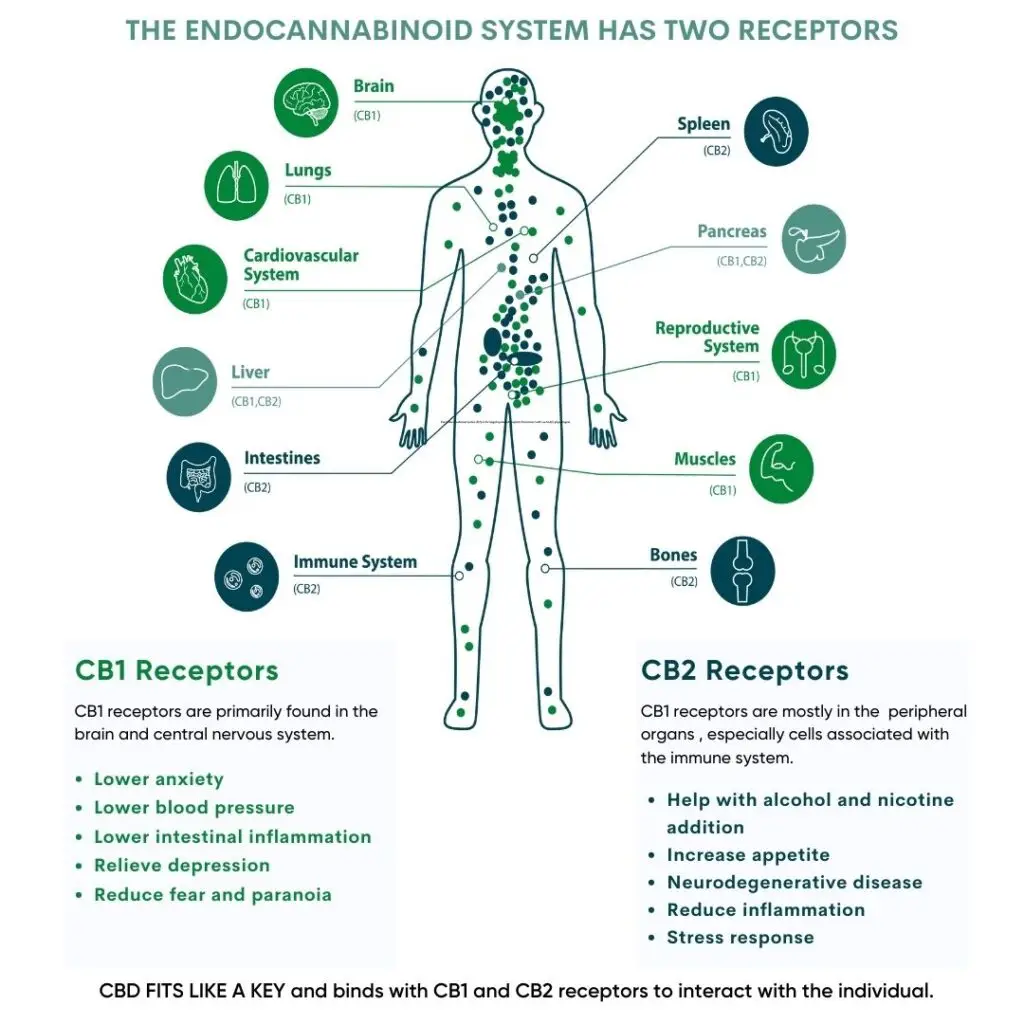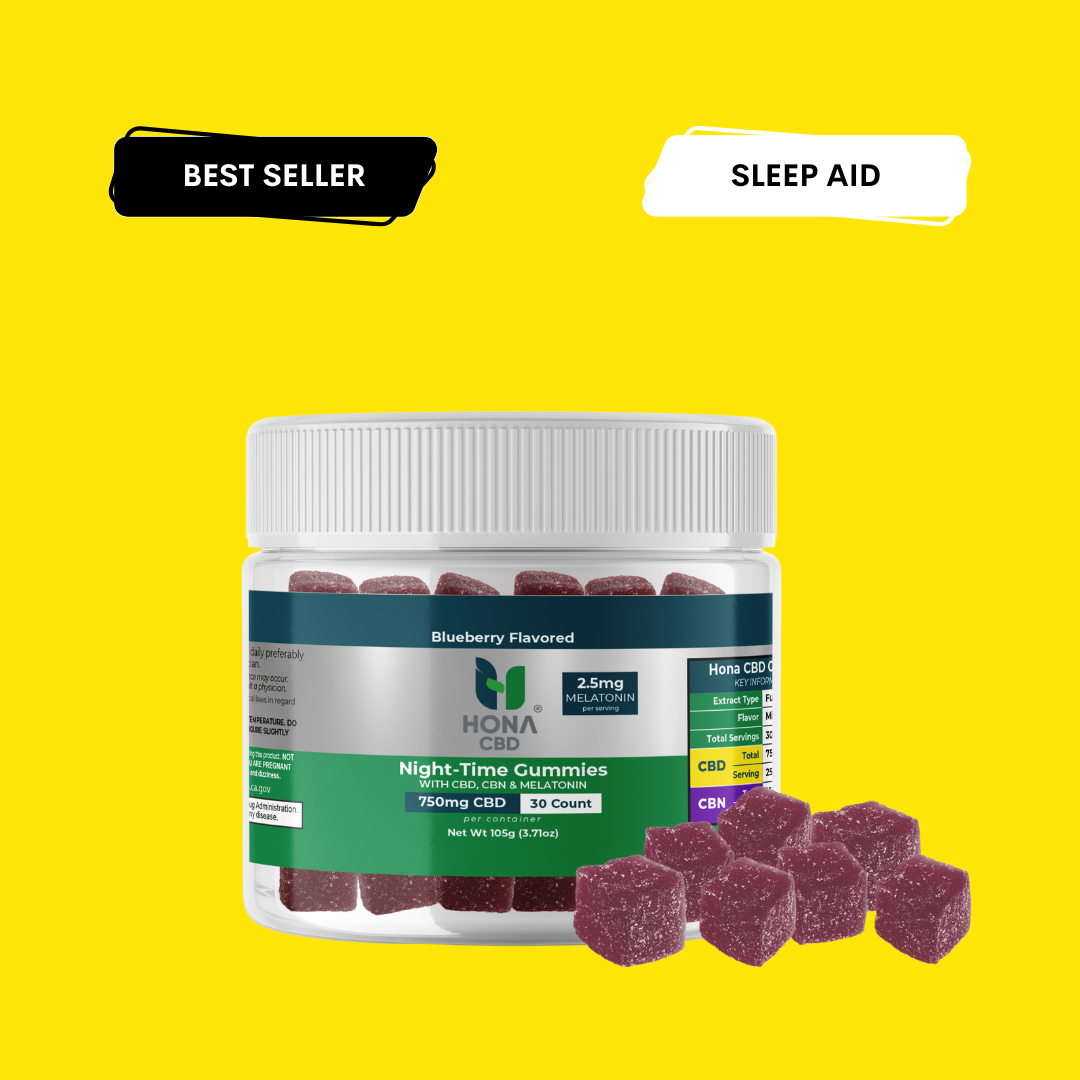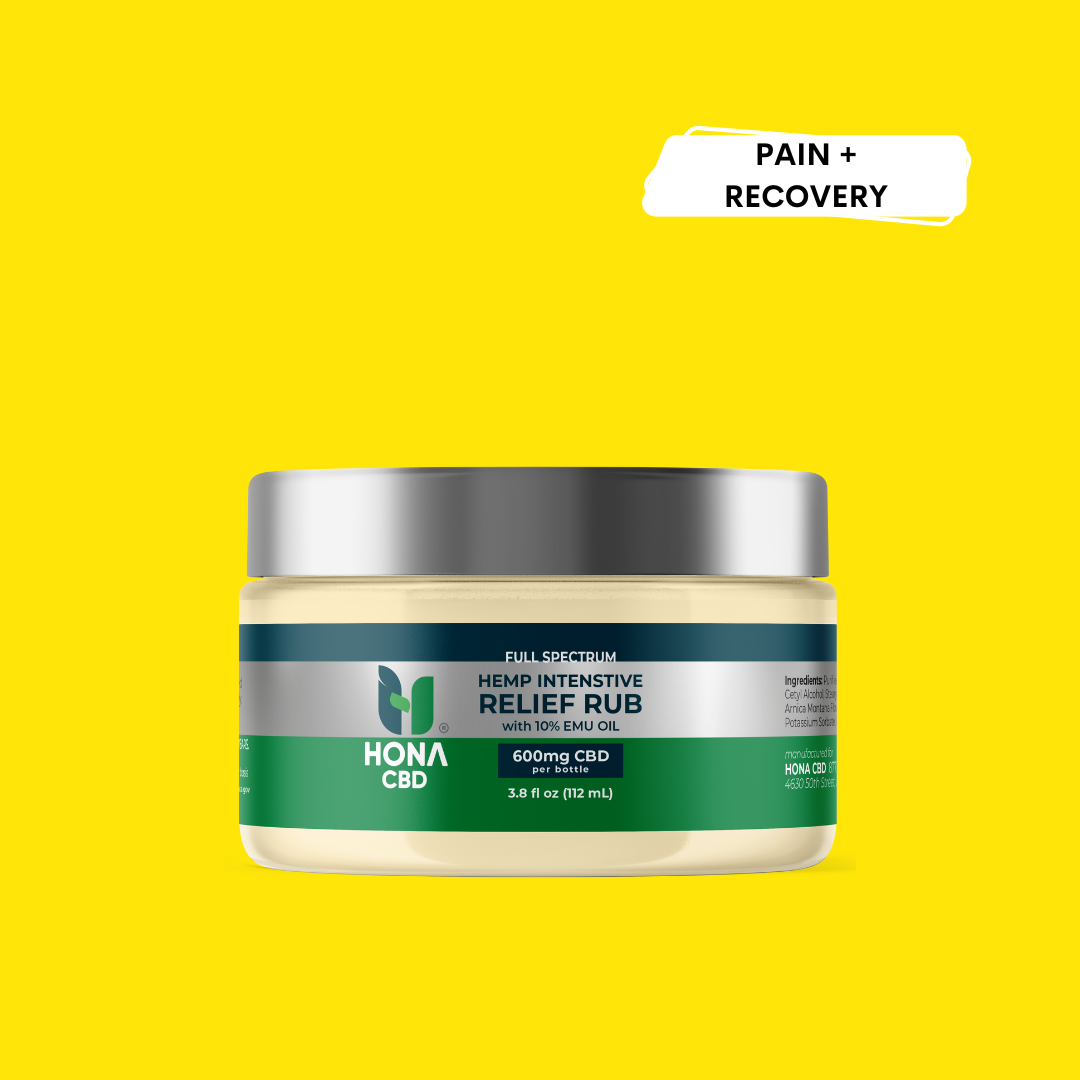Binding to CB1 and CB2 receptors is a fundamental aspect of how the Endocannabinoid System works, as it mediates the effects of cannabinoids, including endocannabinoids produced naturally by the body and Phytocannabinoids found in cannabis plants like THC and CBD. Here is how the binding process works:
CB1 Receptors
Location: CB1 receptors are primarily found in the brain and central nervous system, although they can also be present in some peripheral tissues.
Effects: Activation of CB1 receptors can lead to various effects, including altered perception, mood changes, and pain regulation. These receptors are heavily associated with the psychoactive effects of cannabinoids like THC.
Binding: When a cannabinoid (either endocannabinoid or phytocannabinoid ) encounters the CB1 receptor, it acts like a key fitting into a lock. This binding triggers a signaling cascade that can result in changes in neurotransmitter release and neuronal activity. For example, THC binds to CB1 receptors in the brain, leading to euphoric and psychoactive effects.
CB2 Receptors
Location: CB2 receptors are primarily found in the immune system and peripheral tissues, such as the spleen, tonsils, and cells related to the immune response.
Effects: Activation of CB2 receptors is associated with regulating immune responses, reducing inflammation, and potentially influencing pain perception. These receptors are not typically associated with the psychoactive effects of the THC cannabinoids.
Binding: Like CB1 receptors, when a cannabinoid comes in contact with a CB2 receptor, it triggers a signaling process. This process primarily affects immune cells and the body’s inflammatory responses. CBD, for example, interacts with CB2 receptors and may contribute to its anti-inflammatory effects.
It is important to note that the effects of cannabinoid binding can vary depending on several factors, including the type of cannabinoid, the location of the receptors, and the individual’s unique physiology. While the ENDOCANNABINOID SYSTEM primarily relies on endocannabinoids like anandamide and 2-AG for normal function, Phytocannabinoid s like THC and CBD can also interact with these receptors, influencing various physiological processes.
The balance and regulation of cannabinoid binding are essential for maintaining homeostasis (internal balance) in the body. Disruptions in this balance, whether due to excessive cannabinoid consumption or other factors, can lead to various effects, including changes in mood, cognition, and physical sensations.
Endocannabinoids are produced in the body through a process that involves specific enzymes. Think of the body as having tiny little workers inside, and their job is to make special things called endocannabinoids. These endocannabinoids are like little messengers that help your body work correctly.
Starting with Precursors: Endocannabinoids are made from fatty substances called lipids. These lipids are already present in your body, and they serve as the starting materials for endocannabinoid production.
Enzyme Activation: When your body needs an endocannabinoid to help with something like pain, stress, or inflammation, special enzymes are activated. These enzymes are like little workers that do chemical jobs in your body.
Endocannabinoid Creation: These enzymes work on the fatty lipids and transform them into endocannabinoids. It’s a bit like baking cookies with a recipe – the enzymes follow specific instructions to create the endocannabinoid.
Travel to the Target: Once the endocannabinoid is made, it travels to where it’s needed in your body. It acts like a messenger, telling your body to do something to make you feel better. For example, it might help reduce pain or calm stress.
Feedback Loop: After the endocannabinoid has done its job, other enzymes come in to clean up and get rid of the endocannabinoid. This keeps everything in balance and prevents you from feeling the effects for too long.
Endocannabinoids are like special messengers your body creates when it needs to fix something, and they help your body work properly to keep you healthy and feeling good.
In conclusion, we have taken the next step in our journey into the heart of the Endocannabinoid System in this second installment of our seven-part blog series. The ENDOCANNABINOID SYSTEM, once a hidden marvel of our biology, has come to the forefront of scientific discovery after the passing of the 2018 farm bill. From its humble beginnings with the exploration of cannabis’s psychoactive effects to the groundbreaking work of Dr. Raphael Mechoulam and his team, our understanding of the ENDOCANNABINOID SYSTEM has evolved.
This Endocannabinoid System with its receptors, and enzymes, serves as a guardian of balance within our bodies. It regulates everything from pain perception and mood to sleep patterns and immune responses. The ENDOCANNABINOID SYSTEM’s therapeutic potential has not only led to the development of medications and therapies but also sparked interest in cannabinoids like CBD and THC for various health applications.
As we glance deeper into this remarkable system in the upcoming parts of our blog series, we will uncover even more of its secrets and explore how it interacts with compounds like CBD. So, stay tuned for more insights and revelations about the ENDOCANNABINOID SYSTEM, its functions, and its profound influence on our health and well-being. To continue this journey and stay updated, on the next blog in our seven-part series CBD and the ENDOCANNABINOID SYSTEM: Orchestrating Harmony within the human body and be sure to join our blog at https://honacbd.com/blog/. Together, we will unlock the mysteries of the ENDOCANNABINOID SYSTEM and its role in keeping us healthy and feeling good.


